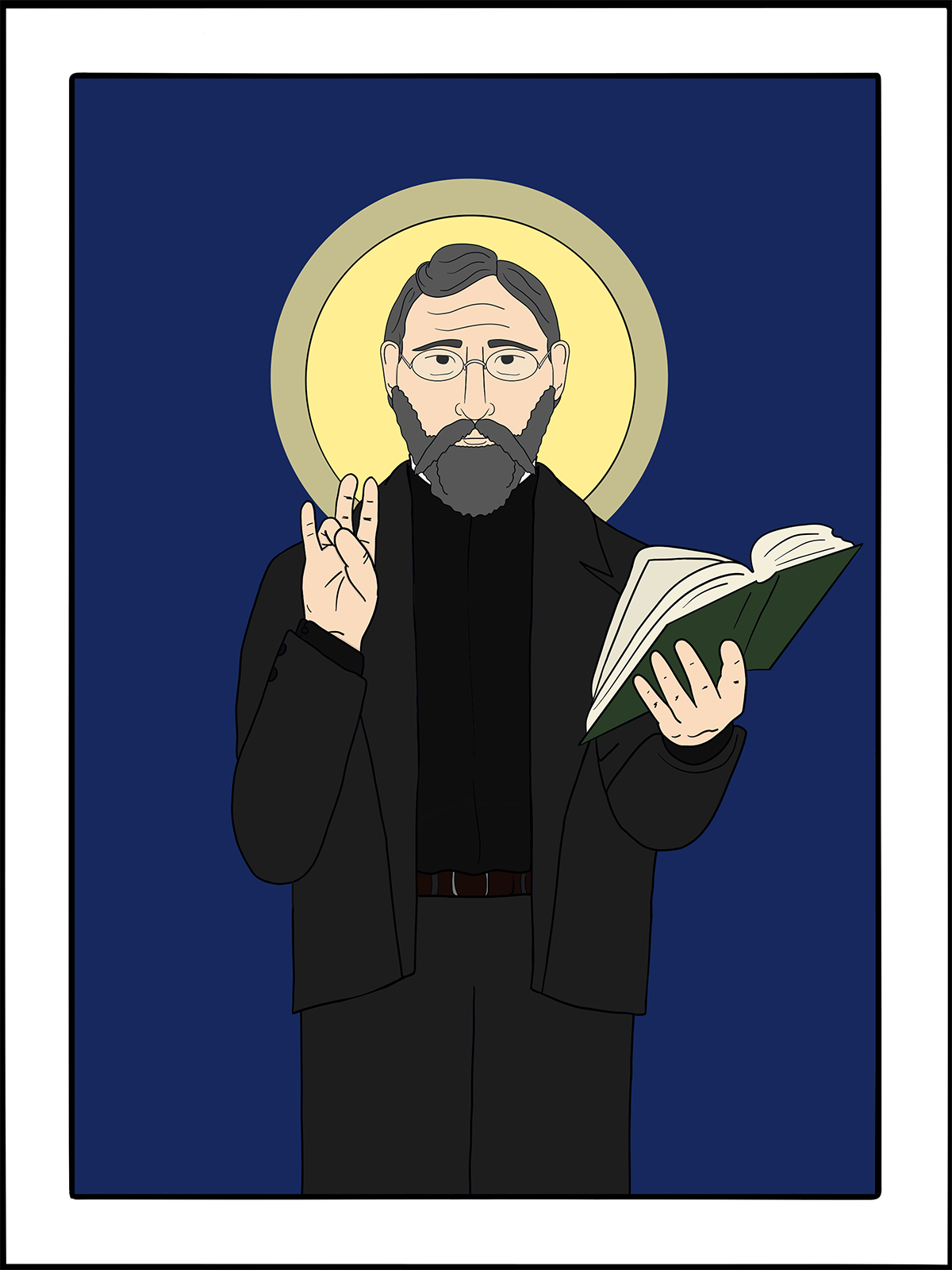
March 22
James De Koven
Priest, 1879
art by Rev. Kirsten Kohr of UHRICHSVILLE, OHIO Almighty and everlasting God, who led your servant James De Koven to honor your presence at the altar, and constantly to point to Christ: Grant that all ministers and stewards of your mysteries may impart to your faithful people the knowledge of your presence and the truth of your grace; through the same Jesus Christ our Lord, who lives and reigns with you and the Holy Spirit, one God, for ever and ever. Amen.
James De Koven was born in Middletown, Connecticut, on September 19, 1831, ordained by Bishop Kemper in 1855, and appointed professor of ecclesiastical history at Nashotah House. In addition, he administered a preparatory school and assisted at the Church of St. John Chrysostom in Delafield, Wisconsin.
Nashotah House was associated, from the time of its foundation, with many of the principles of the Oxford Movement, above all in its emphasis on the sacramental life of the church and the expression of devotion to the Eucharist—including such practices as bowing to the altar, at the name of Jesus, and before receiving Communion. In 1859, De Koven became Warden of Racine College at Racine, Wisconsin.
De Koven came to national attention at the General Conventions of 1871 and 1874, when the controversy over “ritualism” was at its height. In 1871, he asserted that the use of candles on the altar, incense, and genuflections were lawful, because they symbolized “the real, spiritual presence of Christ” which the Episcopal Church upheld, along with the Orthodox and the Lutherans. To the General Convention of 1874, De Koven expressed the religious conviction that underlay his churchmanship: “You may take away from us, if you will, every external ceremony; you may take away altars, and super-altars, lights and incense and vestments . . . and we will submit to you. But, gentlemen . . . to adore Christ’s Person in his Sacrament—that is the inalienable privilege of every Christian and Catholic heart. How we do it, the way we do it, the ceremonies with which we do it, are utterly, utterly, indifferent. The thing itself is what we plead for.”
Because of his advocacy of the “ritualist” cause, consents were not given to his consecration as Bishop of Wisconsin in 1874, and of Illinois in 1875.
Despite calls to serve at prominent parishes in New York City, Boston, Cincinnati, and Philadelphia, he remained in his post at Racine College, where his students admired him as “a model of great learning, gracious manners, personal holiness, and extraordinary compassion.” He died there on March 19, 1879, and is buried on the grounds.
Excerpted directly from “Lesser Feasts and Fasts 2022,” p. 148-149.
Lessons and Psalm2 Timothy 2:10-15
Psalm 84:7-12
Matthew 13:31-33
Preface of a Saint (1)

